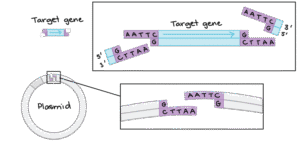Back to: MICROBIOLOGY 500 LEVEL
Welcome to class!
My brilliant microbiology scholar, welcome back again! You’ve been doing so well, and I’m proud of how seriously you’re taking this journey. Today, we’re going to look at something quite fascinating—it’s all about editing and regulating messages in the cell. Think of it like editing a WhatsApp voice note before sending it to your friend. That’s how RNA splicing and regulatory RNAs work in the cell. Let’s break it down together in a way that makes perfect sense.
RNA Splicing And Regulatory RNAs
Imagine you’ve just written an important letter on your laptop, but before you send it, you check for typos, remove unnecessary words, and maybe even rearrange some sentences to make your message clearer. That’s exactly what cells do after making RNA from DNA—they clean it up and fine-tune it before using it to make proteins. This process is called RNA splicing.

And just like a team of editors and advisers help you polish that letter, cells also use regulatory RNAs to control how and when genes are expressed. Let’s look at both of these powerful systems.
RNA Splicing
After transcription, the newly formed RNA is called pre-mRNA, and it contains both useful and non-useful parts.
The useful parts are called exons – these are the coding regions.
The non-useful parts are called introns – they need to be removed.
Splicing is the process where the cell cuts out the introns and joins the exons together to form a clean, final mRNA message that can be used to make proteins.
This splicing is done by a special molecular machine called the spliceosome. And guess what? Sometimes, the same RNA can be spliced in different ways to produce different proteins—this is called alternative splicing.
Real-life Nigerian example: Imagine a tailor in Lagos has one type of Ankara fabric but sews different outfits for different occasions—wrapper, blouse, shirt, or gown—from the same cloth. That’s how alternative splicing works: one gene, many protein “styles”.
Regulatory RNAs
Now, beyond splicing, the cell also uses small RNAs to control gene expression—turning genes up, down, or even off completely.
Two common types are:
1. microRNA (miRNA):
These small RNAs bind to mRNA and either block it from being translated or mark it for destruction.
It’s like putting a “do not play” sticker on a CD—you still have it, but it won’t be used.
2. small interfering RNA (siRNA):
These also bind to specific mRNA molecules and lead to their breakdown.
Scientists even use them in research and medicine to silence harmful genes.

Why These Matter:
RNA splicing and regulatory RNAs are vital for producing the right proteins at the right time. If they go wrong, it can lead to diseases like cancer or genetic disorders. So understanding these processes is essential for modern biotechnology, medicine, and microbiology.
Summary
- RNA splicing removes introns and joins exons to produce functional mRNA.
- Alternative splicing allows one gene to produce many proteins.
- Regulatory RNAs like miRNA and siRNA help control gene expression after transcription.
- These processes ensure cells are efficient, accurate, and well-regulated.
Evaluation
- What is the difference between exons and introns?
- Explain the role of microRNA in gene expression.
- What is alternative splicing, and why is it important?
You’ve done excellently well today! Understanding how RNA is processed and controlled helps you see just how detailed and intelligent life really is. You’re learning the secret codes of the cell—something only the most dedicated students like you get to master. Keep that fire burning—Afrilearn is cheering you on every step of the way. See you in the next exciting lesson!
